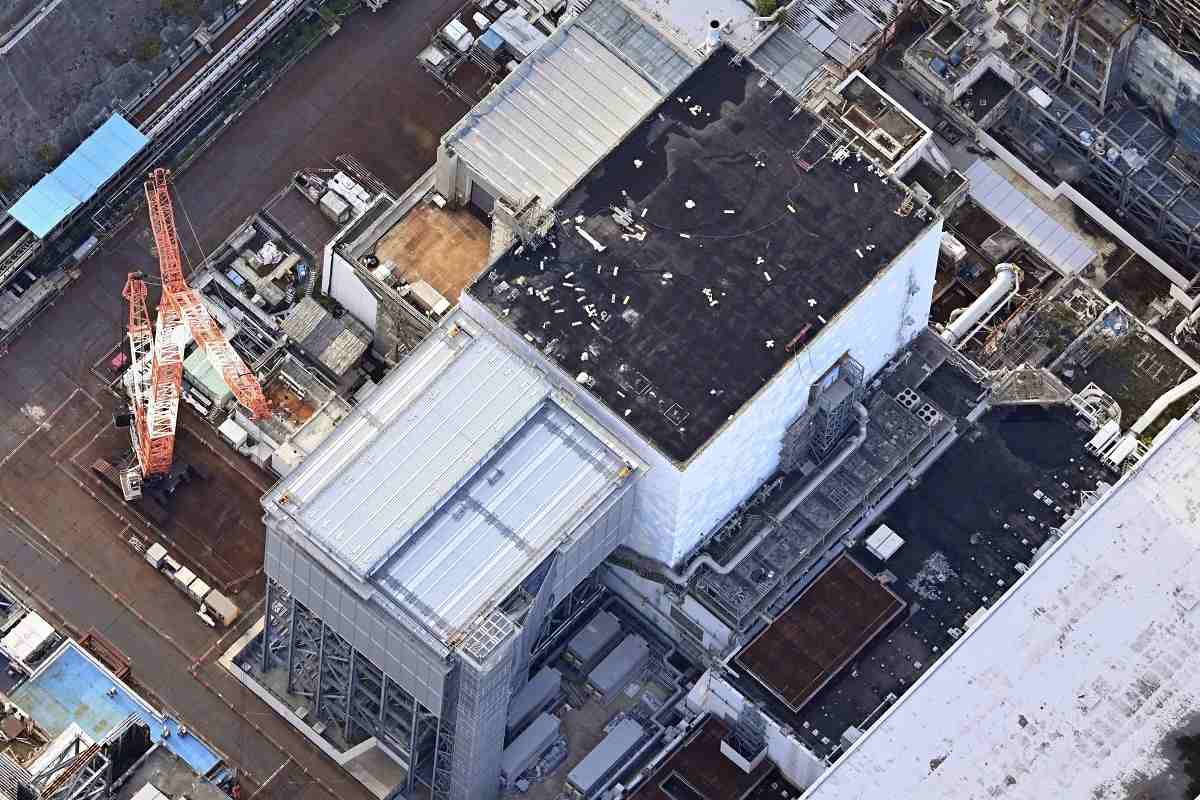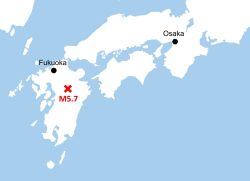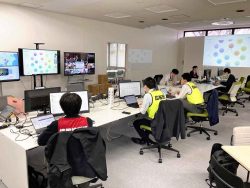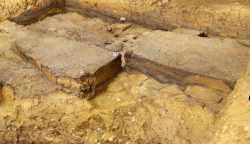Debris Removal Most Important Step at Japan’s Fukushima N-Plant; Key Stage Finally Reached Over 13 Years Since Meltdown

The No. 2 reactor building of the Fukushima No. 1 nuclear power plant is seen in Fukushima Prefecture on Aug. 21.
15:51 JST, September 10, 2024
Retrieving melted nuclear fuel debris from the No. 2 reactor of the Fukushima No. 1 nuclear power plant is the crucial process in decommissioning the plants’ reactors.
Tokyo Electric Power Company Holdings, Inc. has begun the retrieval work at the No. 2 reactor as the first step.
If retrieving the radioactive debris progresses as planned, one benefit will be a reduction in the amount of water containing radioactive substances that remains after being used to cool the reactors. But that will not be the only benefit.
Progress will also reduce workers’ exposure to radiation, and as a result, the pace of the entire decommissioning work can be accelerated.
The melted debris in the reactors emits extremely high levels of radiation.
Nearly 13½ years have passed since the 2011 meltdowns at the plant. After all this time, the start of retrieval work was delayed again, by more than half a month, due to entry-level mistakes.
The mistakes were caused by insufficient confirmation of procedures because TEPCO employees made erroneous assumptions.
The amount of debris to be retrieved in this time’s attempt is merely less than 3 grams, equivalent to what might be scooped out with an ear pick.
Retrieving all of the fuel debris can seem like an endless task, but it must not be suspended again because of a simple mistake.
For TEPCO, it is important for its own personnel to engage directly in the retrieval work, rather than leaving everything to contract workers at the site.
It is also important for TEPCO to indicate what the final phase of the decommissioning work will be like.
The government and TEPCO have not clearly decided such things as whether the grounds of the Fukushima plant will ultimately be left as cleared vacant land or whether that decision will be left to future generations.
Many residents in the affected areas were forced to evacuate and live in places far from their familiar hometowns in the Tohoku region.
While steadily making progress in the work to retrieve debris, TEPCO and the government should present a vision by which evacuees who want to return to their hometowns can have clear images about their future lives.
"Society" POPULAR ARTICLE
-

M4.9 Earthquake Hits Tokyo, Neighboring Prefectures
-

M7.5 Earthquake Hits Northern Japan; Tsunami Waves Observed in Hokkaido, Aomori and Iwate Prefectures
-

Tsukiji Market Urges Tourists to Avoid Visiting in Year-End
-

Israeli Tourists Refused Accommodation at Hotel in Japan’s Nagano Pref., Prompting Protest by Israeli Embassy and Probe by Prefecture
-

M5.7 Earthquake Hits Japan’s Kumamoto Pref., Measuring Upper 5 Intensity, No Tsunami Expected
JN ACCESS RANKING
-

Keidanren Chairman Yoshinobu Tsutsui Visits Kashiwazaki-Kariwa Nuclear Power Plant; Inspects New Emergency Safety System
-

Imports of Rare Earths from China Facing Delays, May Be Caused by Deterioration of Japan-China Relations
-

University of Tokyo Professor Discusses Japanese Economic Security in Interview Ahead of Forum
-

Japan Pulls out of Vietnam Nuclear Project, Complicating Hanoi’s Power Plans
-

Govt Aims to Expand NISA Program Lineup, Abolish Age Restriction






















